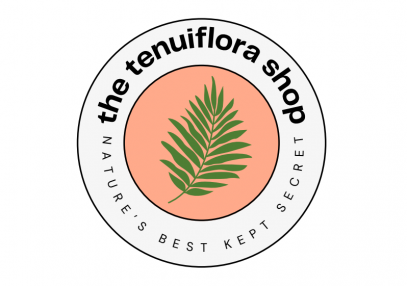Natural dyeing opens up a world of creativity, and mordant for mimosa hostilis dye is key to achieving the boldest and most long-lasting results. While mimosa hostilis naturally contains tannins, which help bind color to fabric, using the right mordant can dramatically shift and enhance the final color outcome.
If you’ve ever wondered which mordant for mimosa hostilis dye gives the best results, this guide is for you. We’re going deep — from why mordants are critical, to the science of each type, how to apply them, and troubleshooting common mistakes.
Why Use a Mordant for Mimosa Hostilis Dye?
Mordants help create a chemical bond between dye and fabric, improving colorfastness and unlocking deeper shades. Although mimosa hostilis already has tannins, adding a mordant for mimosa hostilis dye offers several advantages:
- Boosted color retention
- More vibrant and saturated hues
- Ability to shift tones (pink to purple, warm to cool)
- Better results on cellulose fibers like cotton and linen
- Protection against fading in sunlight and washing
- Ability to expand your palette by shifting the hues achievable
What is a Mordant, Exactly?
A mordant is a substance that bonds dye to fiber. Without it, many natural dyes will wash out or fade quickly. Even though mimosa hostilis naturally holds well, adding a mordant for mimosa hostilis dye can:
- Improve wash and light fastness.
- Alter and expand the available color spectrum.
- Help dye adhere evenly across different fiber types.
The Most Effective Mordants for Mimosa Hostilis Dye
1. Alum (Potassium Aluminum Sulfate)
Alum is the safest and easiest mordant for mimosa hostilis dye to use. It helps achieve:
- Bright pinks and delicate mauves.
- A true-to-source representation of the bark’s natural tone.
- Great results on both animal and plant fibers.
It doesn’t change the color dramatically, which makes it the go-to choice for pure pinks.
2. Iron (Ferrous Sulfate)
Iron is for dyers who want drama. When used as a mordant for mimosa hostilis dye, it:
- Darkens pinks into purples and greys.
- Creates muted, moody tones.
- Increases colorfastness significantly.
3. Copper
Copper is a rare yet effective mordant for mimosa hostilis dye that adds subtle green or teal undertones:
- Great for earthy, forest-inspired palettes.
- Often combined with iron or alum for layered results.
4. Tannins (Optional Pre-Mordanting Boost)
Mimosa already contains tannins, but pre-mordanting cellulose fibers with additional tannins helps:
- Improve dye uptake.
- Achieve more intense color saturation.
How to Mordant for Mimosa Hostilis Dye (Detailed Step-by-Step)
Materials Needed:
- Mordant of choice
- Weighing scale
- Large stainless steel or enamel pot
- Water
- Natural fabric or yarn
Step-by-Step Process:
- Prepare the Mordant Bath
- Fill the pot with enough warm water to submerge the fabric.
- Dissolve your chosen mordant in water. Typical ratio is 15-20% WOF (weight of fiber).
- Soak the Fabric
- Add fabric to the mordant bath.
- Heat gently (below boiling) for 1 hour.
- Stir occasionally for even absorption.
- Rinse and Dry
- Remove fabric and rinse in cool water.
- Allow to dry or use immediately in your dye bath.
Troubleshooting Mordant for Mimosa Hostilis Dye
- Uneven color? Stir more frequently during mordanting.
- Colors fading? Increase mordant concentration slightly.
- Color too dark or muted? Try switching from iron to alum.
Advanced Tips for Artisans
- Experiment by layering mordants for complex tones.
- Pre-mordant fabrics days before dyeing for deeper penetration.
- Keep detailed notes on your mordant combinations to repeat successes.
Eco-Friendly Notes on Mordants
Not all mordants are created equal environmentally. Alum is considered very safe. Iron and copper should be used mindfully and disposed of properly.
Choosing an eco-responsible mordant for mimosa hostilis dye allows artisans to stay in line with clean crafting principles.
Where to Find the Best Mimosa Hostilis for Dyeing
A good mordant means nothing if your bark powder is poor quality. For clean, potent mimosa hostilis root bark powder, visit Tenuiflora Shop. We offer:
- Ethically sourced powder from Mexico and Brazil
- Finely ground for easy and rich dye extraction
- Trusted by artisan dyers around the world
External Botanical Resource
Learn more about mimosa hostilis and its origin at Kew Gardens Plant Profile.
Final Thoughts
Choosing the right mordant for mimosa hostilis dye can make or break your natural dyeing project. Whether you seek vivid pinks, dusky purples, or muted earth tones, the magic lies in pairing your botanical dye with the right helper.
With thoughtful use of alum, iron, copper, and tannins, you can unlock a stunning palette that brings your artisan textiles to life.
Ready to start dyeing like a pro? Grab your ethically sourced mimosa hostilis root bark from Tenuiflora Shop and experiment today.
Tagged: mordant for mimosa hostilis dye, natural dyeing, botanical dyes, artisan dyeing, eco-friendly fabric color, plant-based dyes

